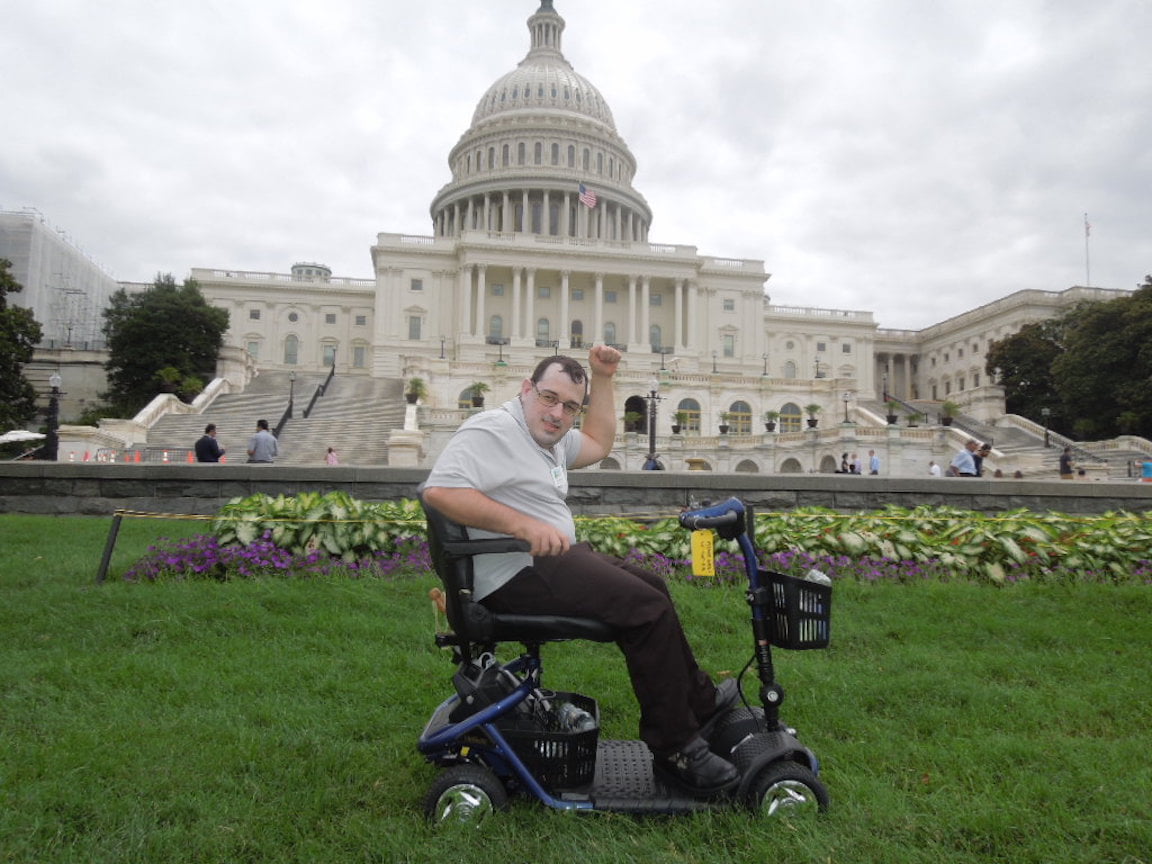
I took to the streets of Washington, D.C., in late July along with 1,500 of my colleagues and associates for a march and rally to support independence for people with disabilities.
The entire team from the New River Valley Disability Resource Center joined me. We were attending the Annual Conference on Independent Living, organized by the National Council on Independent Living (NCIL), and the march and rally (some might call it a protest) was part of one day in a week of learning, networking and advocating for people of all ages and disabilities.
It was a hot day, and I used a scooter. While I frequently make my way around without motorized assistance, the length of the march, the follow-up activities of visiting our legislators and the many access challenges in a large city convinced me that wheels would be preferable for this gig.
Since the Americans with Disabilities Act (ADA) is over two decades old, it’s easy to forget, especially for those without mobility issues, how many accessibility issues still exist in our cities and towns.
It’s also easy to forget how that legislation significantly advanced the lives of people with disabilities, both visible and invisible. The ADA is more than ramps and lower water fountains. It also touches employment practices, public meetings, telecommunications and technology standards.
As stated by the ADA Network: “The purpose of the law is to make sure that people with disabilities have the same rights and opportunities as everyone else. The ADA gives civil rights protections to individuals with disabilities similar to those provided to individuals on the basis of race, color, sex, national origin, age and religion.”
So, some might say, “it’s the law of the land. Why march?”
It’s true. The ADA made huge leaps for myself and others with disabilities. But, as mentioned, and as I see every day, improvements are still in order. And, like the weather and many things in America, legislation and public opinion can change overnight.
Even while we were in D.C., a vote planned on the Senate floor to repeal current healthcare laws could have significantly altered our lives from one day to the next.
The Affordable Care Act (some call it Obamacare) helped people with disabilities on numerous levels, including covering pre-existing conditions, limiting lifetime or annual limits and expanding Medicaid in 31 states, to name a few.
Although Virginia did not expand Medicaid, I personally benefited from these and other measures.
Analyses of the various replacements to the ACA suggest that nearly all of these benefits will be reduced or eliminated for people with disabilities. A complete repeal would have very negative consequences.
As the Independent Living Coordinator at the NRV DRC, my job is to help people from our region find ways to live more independently. I do that in many ways, like connecting them to service providers or helping to develop independent living goals. My hope is to live in an America accessible to all.
According to census figures, there are around 21,000 people living with disabilities in the New River Valley. I thought about them that day in Washington. When I marched on July 25, I marched for all.
You can contact the New River Disability Resource Center by calling 540-266-1435 or writing to info@nrvdrc.org.
Matt Shelor,
Independent Living Coordinator,
New River Valley Disability Resource Center

